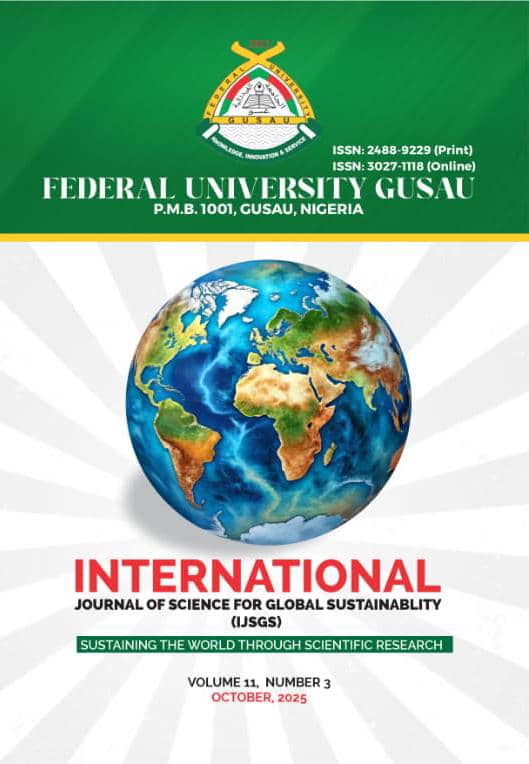Ruptured Uterus in Gusau, Northwest Nigeria: A Retrospective Cross-Sectional Study
DOI:
https://doi.org/10.57233/ijsgs.v11i3.938Keywords:
Ruptured uterus, obstetric emergencies, maternal mortality, perinatal outcomes, NigeriaAbstract
Ruptured uterus is one of the most life-threatening complications in obstetrics, especially in low- and middle-income countries. This study retrospectively analyzed cases of ruptured uterus managed at the Federal Medical Centre, Gusau, Northwest Nigeria, to identify prevalence, risk factors, clinical presentation, management outcomes, and associated complications. A total of 60 cases were reviewed. The mean age of patients was 30.4 ± 7.1 years, with 66.7% residing in rural communities. Most patients (80%) were unbooked, while 23.3% had a history of cesarean section (CS). Common risk factors included oxytocin use (33.3%), misoprostol use (20%), and combined uterotonic use (46.7%). Rupture most frequently occurred at home (16.7%) or in lower-level health facilities (63.3%). Vaginal bleeding (100%) and abdominal pain (83.3%) were the predominant presenting symptoms, while 56.7% presented in shock. Management included uterine repair (23.3%), repair with bilateral tubal ligation (46.7%), and subtotal hysterectomy (30%). Perinatal mortality was as high as 93.3%. The study highlights the urgent need for improved antenatal care, timely referral systems, skilled birth attendance, and strengthened health care infrastructure to reduce maternal and perinatal morbidity and mortality from ruptured uterus in Nigeria.
Downloads
Published
How to Cite
Issue
Section
License
Copyright (c) 2025 Author(s)

This work is licensed under a Creative Commons Attribution 4.0 International License.












